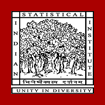Transitions from chimeras to coherence: An analytical approach by means of the coherent stability function
Article Type
Research Article
Publication Title
Physical Review E
Abstract
Chimera states have been a vibrant subject of research in the recent past, but the analytical treatment of transitions from chimeras to coherent states remains a challenge. Here we analytically derive the necessary conditions for this transition by means of the coherent stability function approach, which is akin to the master stability function approach that is traditionally used to study the stability of synchronization in coupled oscillators. In chimera states, there is typically at least one group of oscillators that evolves in a drifting, random manner, while other groups of oscillators follow a smoother, more coherent profile. In the coherent state, there thus exists a smooth functional relationship between the oscillators. This lays the foundation for the coherent stability function approach, where we determine the stability of the coherent state. We subsequently test the analytical prediction numerically by calculating the strength of incoherence during the transition point. We use leech neurons, which exhibit a coexistence of chaotic and periodic tonic spiking depending on initial conditions, coupled via nonlocal electrical synapses, to demonstrate our approach. We systematically explore various dynamical states with the focus on the transitions between chimeras and coherence, fully confirming the validity of the coherent stability function. We also observe complete synchronization for higher values of the coupling strength, which we verify by the master stability function approach.
DOI
10.1103/PhysRevE.100.012315
Publication Date
7-30-2019
Recommended Citation
Rakshit, Sarbendu; Faghani, Zahra; Parastesh, Fatemeh; Panahi, Shirin; Jafari, Sajad; Ghosh, Dibakar; and Perc, Matjaž, "Transitions from chimeras to coherence: An analytical approach by means of the coherent stability function" (2019). Journal Articles. 768.
https://digitalcommons.isical.ac.in/journal-articles/768



Comments
Open Access, Green